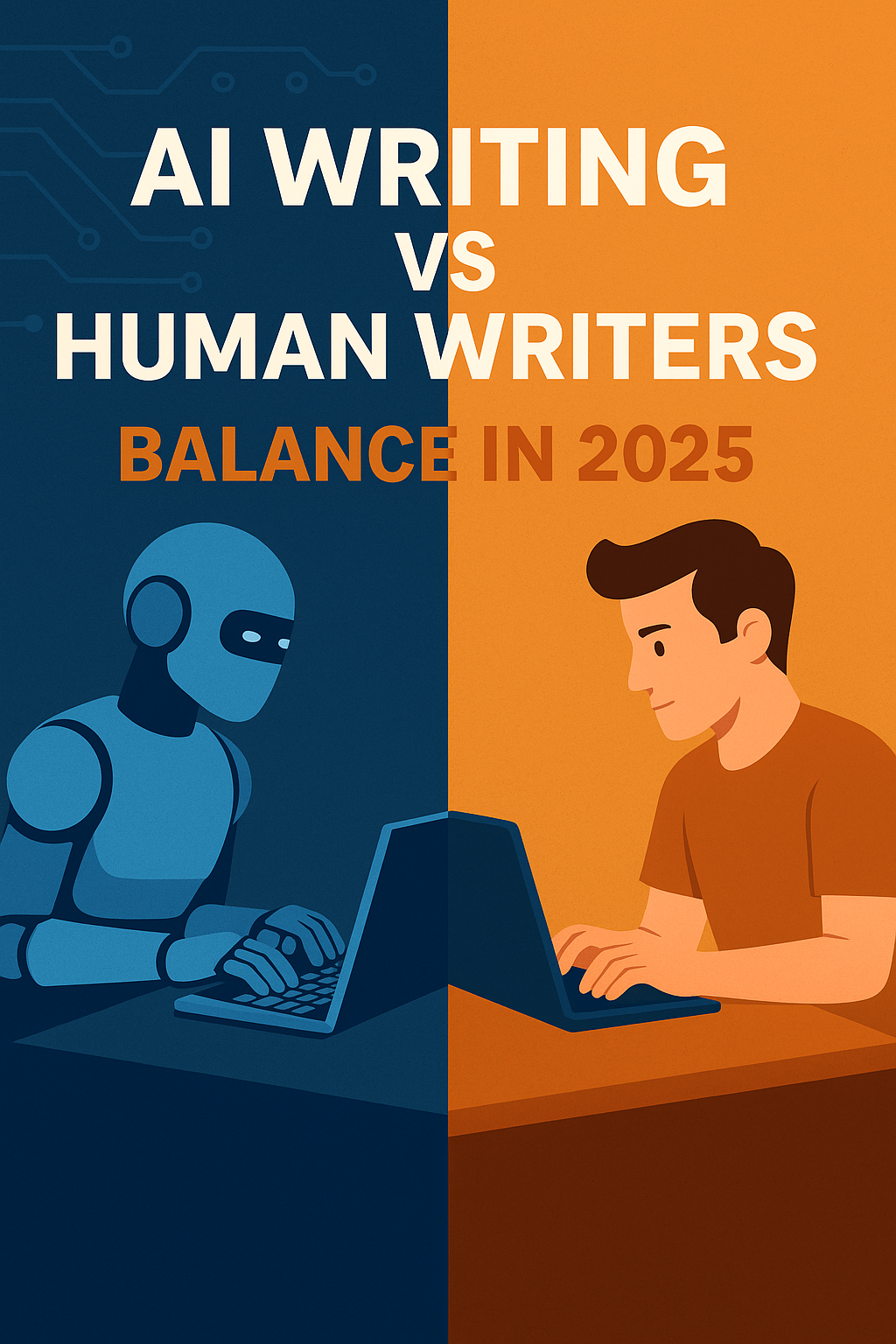Whenever I talk to fellow bloggers or marketers about AI Writing Tools, the first question that comes up is: “So… do you think AI will replace us?” It’s a fair question. AI has advanced quickly, and in 2025, it can write drafts, optimize for SEO, and even mimic certain tones. But after using these tools daily for the past year, I can confidently say: AI isn’t here to replace human writers—it’s here to support them.
In this article, I’ll break down what AI does well, where it falls short, and how we can combine AI efficiency with human creativity to build blogs that actually connect with readers.

What AI Writing Tools Do Best
There’s no denying the strengths of AI Writing Tools. From my personal experience, here’s where they shine:
- Speed & Drafting – I once needed to produce three blog posts in a single week. Normally, that would feel impossible. But with Jasper and Writesonic, I was able to generate outlines and first drafts in a few hours. Without AI, that would have taken days.
- SEO Optimization – Tools like SurferSEO paired with AI writing platforms can suggest keywords, headers, and FAQs instantly. I’ve used these suggestions to get posts indexed faster, and some even ranked quicker than my manually optimized ones.
- Consistency – Blogging is a long game. The ability to publish regularly is what builds authority. With AI Writing Tools handling brainstorming and outlines, I can focus on polishing and publishing more consistently.
In short: AI is fantastic at handling the repetitive or data-driven side of writing.
Where Human Writers Still Win
But here’s the flip side: every time I publish an article straight from an AI draft without adding my touch, the results are… flat. The traffic might come, but readers don’t stick around. That’s because AI can’t (yet) replicate the nuances of human experience.
For example:
- When I shared a personal story about struggling with time management, readers commented saying they related to my journey. No AI could have written that.
- Cultural context also matters. AI might recommend a phrase or idiom that makes sense in one country but sounds awkward in another. As a human, I catch those mistakes instantly.
At the end of the day, people read blogs to connect with people, not just to consume information. That human connection is something no tool can replace.
Finding the Right Balance
So, how do we strike the right balance? Here’s the workflow that works best for me:
- AI for Outlines – I let AI generate structure. For example, if I want to write about “productivity apps,” I’ll ask Jasper for 10 potential subheadings.
- AI for Brainstorming – Copy.ai often helps me brainstorm catchy headlines or intros when I’m stuck.
- Human for Storytelling – I always inject my own stories, humor, or even mistakes into the post. That’s what makes it authentic.
- Human for Editing – Before hitting publish, I read the draft aloud. If it doesn’t sound like something I’d actually say, I rewrite it.
This hybrid approach keeps me efficient without losing my voice.
The Risk of Over-Reliance on AI
I’ve seen bloggers rely too heavily on AI Writing Tools, and the results are obvious. Their posts start to sound generic—like something you’ve read a hundred times before. Google’s algorithms are also catching on. They don’t penalize AI content outright, but they reward originality, depth, and user engagement. If your content doesn’t have those, rankings will suffer.
That’s why I recommend using AI as a co-pilot, not the pilot. Let AI handle the heavy lifting, but make sure your human creativity is in the driver’s seat.
What Readers Actually Want
Think about the blogs you enjoy reading. Chances are, it’s not because of flawless grammar or perfect keyword placement. It’s because the writer makes you feel something—whether it’s inspired, motivated, or just entertained.
When I read comments on my posts, the feedback that sticks with me isn’t “great use of keywords.” It’s “I really connected with your story.” That’s the secret sauce. AI can’t replicate that level of connection, and that’s where human writers have the edge.
Conclusion
In 2025, the smartest bloggers aren’t asking, “Will AI replace us?” Instead, they’re asking, “How can I use AI to make myself better?” That’s the real power of AI Writing Tools. They save time, improve consistency, and boost SEO, but they can’t replace your unique voice and experiences.
The future of blogging is a partnership: AI provides the efficiency, humans provide the authenticity. Together, they make content creation sustainable and impactful.
So don’t fear AI—use it. Let it handle the tasks that slow you down, but never stop bringing your own stories, ideas, and perspective to the table. Because that’s what your readers truly care about.